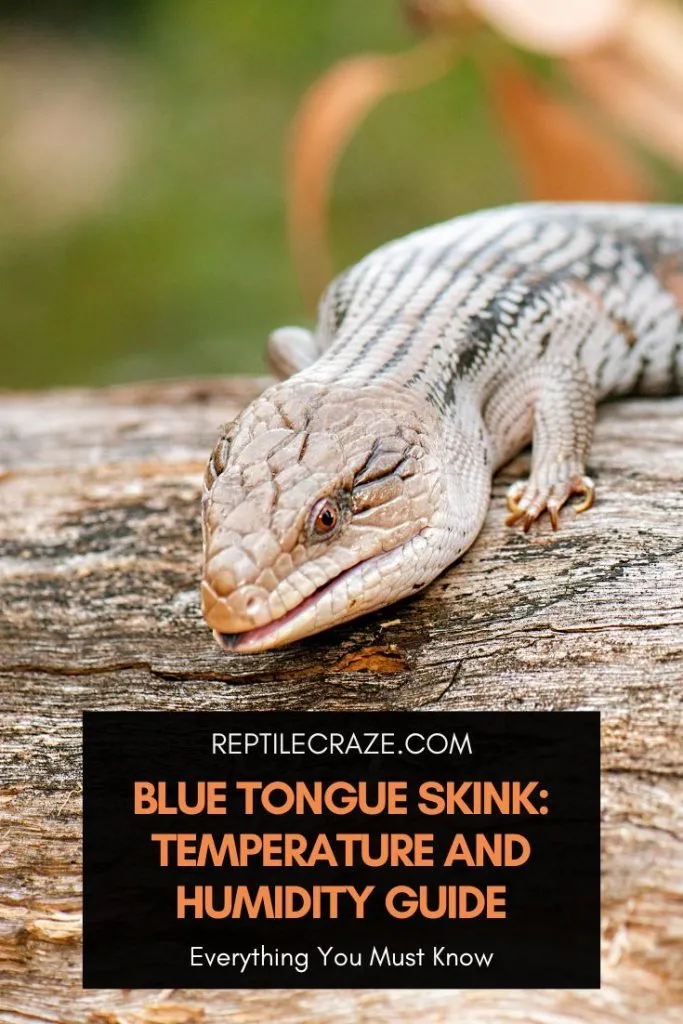
Being the largest members of the skink family, the blue-tongued lizard family is composed of different species that come from various localities. In captivity, each species requires indoor enclosures with a specific setup that simulates their natural habitat. But what temperature and humidity level should be maintained for your blue tongue skink enclosure?
Blue tongue skinks require an environmental temperature gradient ranging between 65-115 °F (18-46 °C) to maintain their internal temperature at 86-99 °F (30-37 °C). Humidity levels should be maintained at 40% to 80%, depending on the type of blue tongue skink.
This article will cover ideal temperature and humidity levels for various species of blue tongue skink, as well as the risks of too low or too high temperature and humidity settings.
Table of Contents
Why Are Temperature and Humidity Important for Blue Tongue Skinks?
Blue tongue skinks naturally thrive in Australia or Indonesia, which generally have warm daytime temperatures and moderately cool temperatures at night.
When keeping blue tongue skinks in captivity as pets, it is important to set up an ideal container that replicates the conditions of the environment where the species lives in the wild.
Temperature and humidity are part of artificial environments which must be monitored to maintain a healthy BTS.
As cold-blooded animals, reptiles such as blue tongue skinks are considered ectothermic since they depend on external heat sources. This means that they cannot produce internal body heat as birds and mammals do.
With low metabolic heat production, BTS need an environment that has a temperature gradient or areas with different temperatures. This allows them to regulate their body temperature as needed.
Proper humidity in the vivarium is also important for the BTS’s respiratory and skin health. Adequate humidity helps them to shed easily, but the levels should not go too high as it may weaken their immune system.
Tip: Also read our blue tongue skink diet guide here!
Food list included!
Blue Tongue Skinks’ Temperature Needs
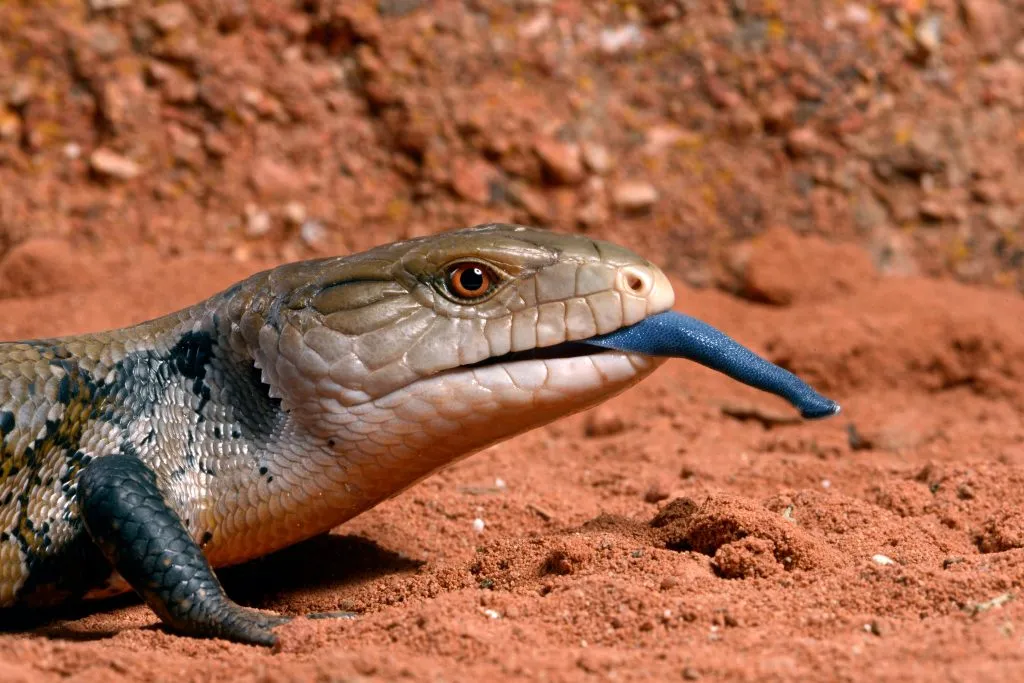
Blue tongue skinks rely on the temperature in their environment. In the wild, it is normal for them to spend 1 to 4 hours basking in the sun each day.
Since BTS regulate their temperature by moving to warmer or colder areas, this must be considered when setting up their enclosure. It is imperative to provide them with the right temperature gradient.
Each species of blue tongue skink has specific temperature requirements. Here is a quick-reference chart of ideal temperatures for Australian and Indonesian species of blue tongue skink:
| Area | T. scincoides intermedia (Northern, Australian) | T. scincoides scincoides (Eastern, Australian) | T. gigas evanescens (Merauke, Indonesian) |
| Cool End | 75-79 °F (23-26 °C) | 70-75 °F (21-24 °C) | 75-79 °F (23-26 °C) |
| Warm End | 96-98 °F (35-37 °C) | 90-95 °F (32-35 °C) | 96-98 °F (35-37 °C) |
| Basking Spot | 100-102 °F (38-40 °C) | 95-98 °F (35-37 °C) | 105-115 °F (40-46 °C) |
What Happens when Thermal Gradients Are Not Maintained?
As a pet owner, you need to make sure that your animal will not encounter any health problems during its captivity. Prepare a vivarium that provides all its needs through sufficient facilities such as a water bowl or basking site.
Blue tongue skinks cannot tolerate a
One of the serious signs shown by blue tongue skink when the enclosure is too hot is glass surfing, where it seems confused while trying to avoid the warmest area of the
Blue tongue skinks have bodily protection to help them deal with temperature issues and when it begins to glass surf, it means that the conditions are already at an extreme level that affects their biological safeguards.
Other health risks can also develop from deficient overall temperatures. Acute stress and chronic debilitation can result when the blue tongue skink cannot perform thermoregulation.
Meanwhile, low ambient temperatures can make your BTS less active and lead to an increased time spent basking.
Tip: Wanna know if you blue tongue skink is happy and healthy? Read our article on that here!
Measuring the Temperature Level
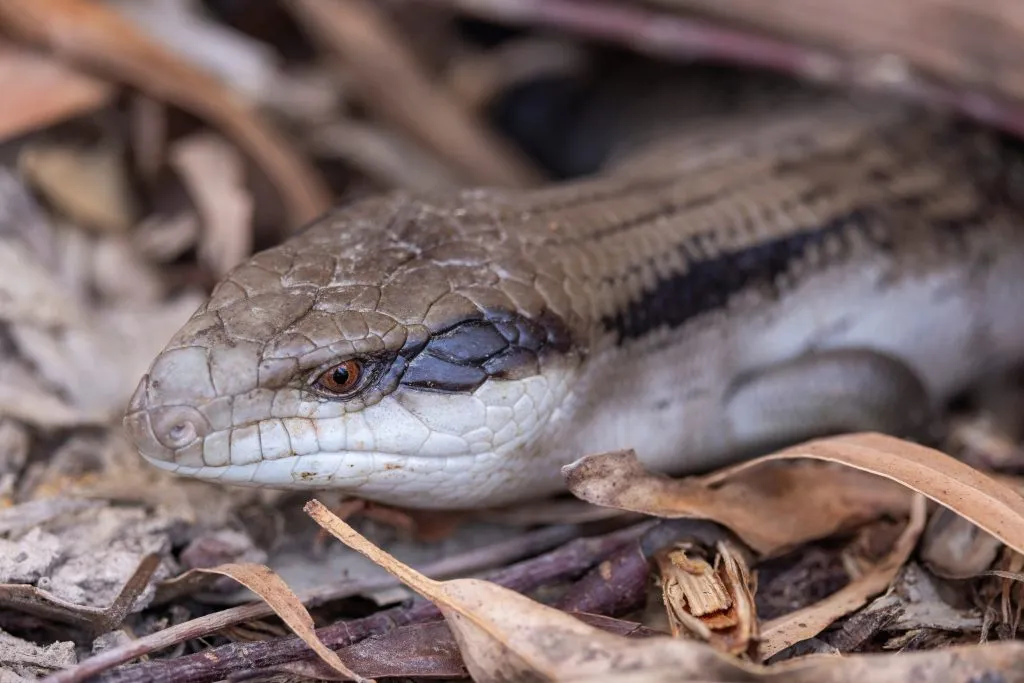
To ensure that appropriate ambient temperatures are maintained in a blue tongue skink enclosure, good monitoring devices are required.
You can use analog thermometers that come with Celsius or Fahrenheit readings.
For more accurate temperature readings, there are digital thermometers with two probes placed each on the warm side and cool side of the vivarium.
The readouts obtained from the probes will serve as a guide in monitoring the temperature gradient in the enclosure.
We recommend getting a temperature gun like this, though, since they are accurate and it is very easy to measure the temperatures in every spot of the
How to Heat Your Blue Tongue Skink Enclosure
Heating the enclosure to an ideal thermal gradient can be achieved by using tools such as bulbs, lamps, or a ceramic heat emitter.
One of the best ways to generate this gradient is to install a basking lamp at one end of the vivarium, and leave it on for about 10 to12 hours each day. This would recreate the effect of lying out in the warmth of the sun.
There are also heating devices available that can be placed under the
During the nighttime, it is a healthy practice to allow your BTS to experience lower temperatures. You may not need to provide heat at night, as long as the temperature does not fall below 60 °F (16 °C).
If ever the enclosure needs to be heated at night, a ceramic heat emitter can be used, since it gives off heat without emitting light.
Aside from maintaining appropriate temperature levels at night, it is also important to make sure that the
Blue Tongue Skinks’ Humidity Needs
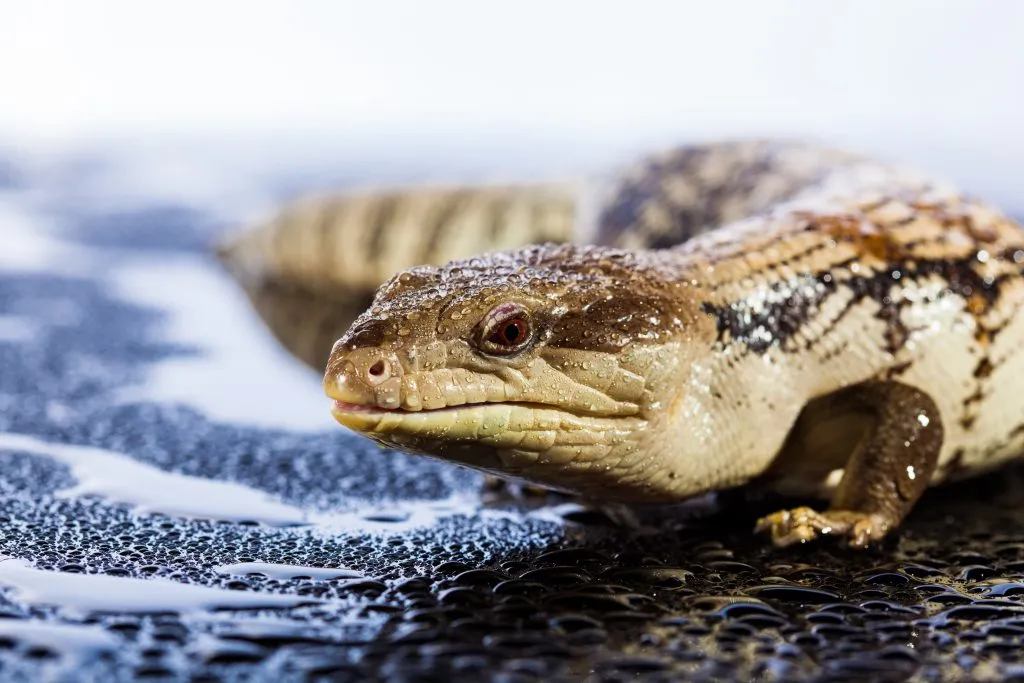
Blue tongue skinks need moderate to high humidity levels. Most Australian species thrive at approximately 40% humidity, while Indonesian types require humidity levels of about 60-80%.
However, each species has its own optimum range of humidity requirements. Here is a quick reference table:
| Group | Subspecies | Humidity |
|---|---|---|
| Indonesian | T. gigas gigas (Classic Indonesian) | 60-80% |
| Indonesian | T. gigas evanescens (Merauke) | 60-80% |
| Indonesian | T. scincoides chimaera (Tanimbar) | 60-80% |
| Indonesian | T. gigas gigas (Halmahera) | 80-100% |
| Australian | T. occipitalis (Western) | 20-40% |
| Australian | T. scincoides scincoides (Eastern) | 30-50% |
| Australian | T. multifasciata (Centralian) | 20-40% |
| Australian | T. scincoides intermedia (Northern) | 30-50% |
You can learn more about the humidity requirements of the two categories of BTS in this video:
Monitoring the Humidity Level
To monitor the humidity level inside a
Even if the measurements appear normal, it is also a good practice to check the skin of your blue tongue skink.
If you observe regular shedding of the skin in your skink, it is a good indication that the humidity in the enclosure is just at the right level.
Dry, rough scales indicate that more moisture is needed, while the growth of mold in the
Adjusting the Humidity Level
The way the enclosure is set up significantly affects its humidity, and you may need to raise or lower the humidity level from time to time. There are different ways to adjust the humidity levels according to the skink’s requirement.
To increase the humidity levels in your skink’s vivarium, place a water bowl or dish in the warm spot and allow the water to evaporate. Just make sure to choose the right size and depth of bowl to prevent the skink from drowning.
Another natural way of increasing humidity is by misting. Spray inside the
Tip: Plants can also help maintaining the humidity in the blue tongue skink
tank . We show you what plants you can use in a BTS tank here!
There are also humidifiers or foggers that you can use for a more automated solution. If you do not want to use a humidifier, there are substrates that are good for holding moisture inside the
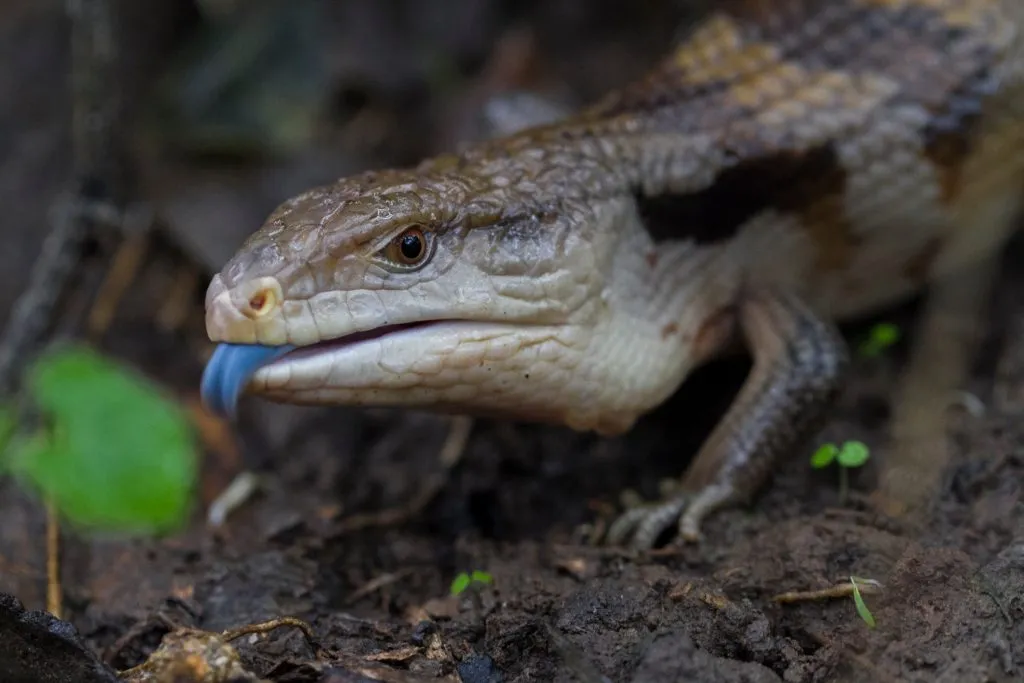
To lower the humidity level, different approaches can be taken according to the structure of the vivarium. Firstly, if you need to reduce the humidity drastically, you can remove the water dish temporarily.
Longer-term, you can consider using a smaller water dish to keep the humidity levels more moderate. You can also place the dish far away from the light source so that less water will evaporate.
If you are using a humidifier, you can turn it off for a while and turn it back on only when needed. This also helps to make sure that the
Another option is to increase the ventilation in the glass enclosure, so the water molecules will escape. To allow good ventilation inside the cage, screens can be used to cover the top of the enclosure.
Final Thoughts
Setting up a comfortable and natural habitat for your blue tongue skink is key to helping it thrive, and part of that is maintaining the correct humidity and temperature levels.
Remember that different species of blue tongue skink have different requirements, as they evolved in different parts of the world. Australian species tend to need slightly lower temperatures and lower humidity than their Indonesian cousins.
As well as controlling the environmental conditions in the
- Enchi Ball Python: A Unique and Stunning Morph of Python regius - March 27, 2025
- Emerald Tree Monitor: The Enigmatic Green Guardian of the Rainforest - March 26, 2025
- The Egyptian Cobra (Naja haje): A Fascinating Serpent - March 25, 2025
